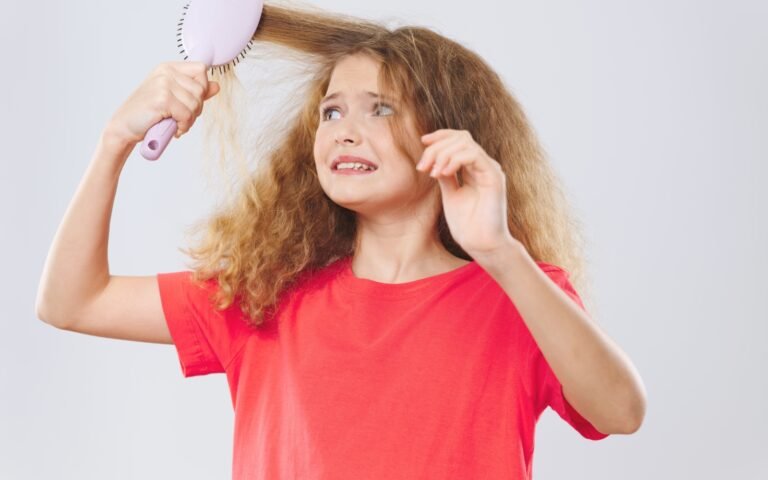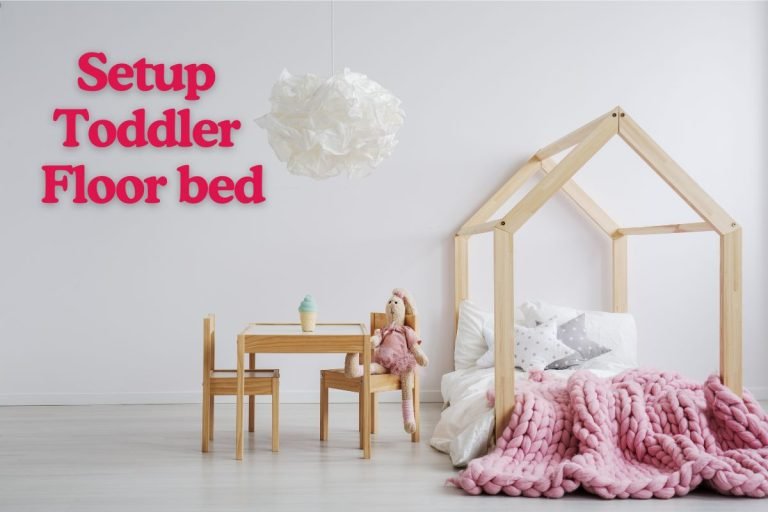Adjustable vs Fixed High Chairs: Which is Best for Your Baby?
Choosing between Adjustable vs Fixed High Chairs for your baby can be challenging. High chairs are crucial for your child’s mealtime experience, evolving from basic wooden seats to modern designs with adjustable heights and reclining features.
In this guide, we explore the pros and cons of each type. From safety considerations to space requirements, we’ll help you make an informed decision based on your baby’s needs, your lifestyle, and your home’s layout.
Find the perfect high chair that balances comfort, safety, and functionality for your family’s mealtimes.
Understanding High Chairs
Purpose and benefits
High chairs serve multiple purposes and offer several benefits for your baby’s development:
- Promotes proper posture: A high chair provides a supportive seat that encourages your baby to sit upright, promoting good posture during meals.
- Encourages self-feeding: With a high chair, your baby can practice self-feeding skills, fostering independence and confidence.
- Facilitates family mealtime: High chairs allow your baby to join the family at the dining table, promoting bonding and social interaction during mealtime.
Types of high chairs
There are two main types of high chairs to consider:
- Adjustable high chairs: These high chairs offer height and seat positioning flexibility, adapting to your baby’s growing needs.
- Fixed high chairs: Fixed high chairs have a stable design with a set height and seat configuration, providing simplicity and reliability.
Understanding the purposes and differences between adjustable and fixed high chairs can help you choose the best option for your baby’s comfort and safety.
Adjustable High Chairs
Definition and features
Adjustable high chairs are designed with versatility in mind, offering various features to cater to your baby’s needs:
- Height adjustability: These chairs can be adjusted to different heights, ensuring your baby is at the right level for feeding.
- Reclining seat: Some models offer a reclining seat option, allowing your baby to relax comfortably during mealtime.
- Removable trays: The trays can be easily detached for cleaning or when your baby outgrows the need for a tray.
- Convertible to booster seats: Many adjustable high chairs can be converted into booster seats, extending their usability as your child grows.
Advantages
There are several advantages to opting for an adjustable high chair:
- Grows with your baby: The ability to adjust the height and other features means the chair can adapt to your baby’s changing needs.
- Suitable from infancy to toddlerhood: These chairs often accommodate infants through to toddlers, providing long-term usability.
- Customization comfort: You can customize the chair to ensure maximum comfort for your baby during mealtime.
Disadvantages
However, there are also some drawbacks to consider:
- More expensive: Adjustable high chairs are pricier than fixed models due to their additional features.
- Potential safety issues if not adjusted correctly: If the chair is not adjusted correctly, there may be safety concerns such as instability or improper positioning for the baby.
These factors can help you decide whether an adjustable high chair is right for your baby’s feeding needs.
Fixed High Chairs
Definition and features
Fixed high chairs are characterized by their static design and simplicity:
- Static height: These chairs have a fixed height that cannot be adjusted.
- Fixed seat position: The chair’s seat remains fixed without reclining or adjustable features.
- Simple design: Fixed high chairs typically have a straightforward and uncomplicated design.
Advantages
Fixed high chairs offer several advantages:
- Lower cost: These chairs are often more affordable than adjustable models.
- Easy to clean: With fewer moving parts, fixed high chairs are easier to clean and maintain.
- Sturdy and stable: The static design of fixed high chairs provides a sturdy and stable seating option for your baby.
- Simple to use: Making fixed high chairs simple requires no adjustments.
Disadvantages
However, there are some drawbacks to consider:
- Not adaptable as baby grows: Fixed high chairs do not accommodate your baby’s growth, meaning they may not be suitable for long-term use.
- May not fit all table heights: These chairs’ fixed heights may not align with all table heights, potentially limiting their compatibility.
- Less comfortable for younger babies: The lack of adjustable features may result in a less comfortable seating position for younger babies who require more support.
Despite these disadvantages, fixed high chairs provide a cost-effective and practical baby feeding option.
Factors to Consider
Baby’s age and development stage
When choosing a high chair, consider your baby’s age and stage of development:
- Newborns to 6 months: Look for high chairs that offer reclining positions and provide adequate support for newborns unable to sit up independently.
- 6 months to 1 year: As your baby starts to sit up and explore solid foods, opt for high chairs with adjustable features and supportive seating to promote proper posture and feeding.
- One year and beyond: As your baby becomes more independent and develops eating skills, consider high chairs that can transition into booster seats or accommodate larger toddlers.
Space constraints
Evaluate your living space to determine the most suitable high chair option:
- Small apartments: Choose compact high chairs that can be easily folded or stored when not in use to maximize space.
- Open floor plans: Consider high chairs with sleek designs seamlessly blending into your home decor without cluttering the space.
Budget
Consider your budget and the long-term costs associated with different high chair options:
- Short-term vs long-term costs: While fixed high chairs may be more affordable upfront, adjustable models offer long-term value as they can adapt to your baby’s changing needs.
- Cost of additional features: Assess whether the added features of adjustable high chairs justify the higher price compared to simpler fixed models.
Lifestyle
Take into account your lifestyle and specific needs when selecting a high chair:
- Frequent travelers: For meals on the go, opt for portable high chairs that are lightweight and easy to transport.
- Multi-home families: Choose high chairs that are easily portable or consider having multiple chairs for each residence to accommodate your family’s lifestyle.
Considering these factors will help you make an informed decision and choose the best high chair option for your baby’s comfort and your family’s needs.
Safety Considerations
JPMA certification
When selecting a high chair, look for models certified by the Juvenile Products Manufacturers Association, ensuring they meet safety standards and regulations.
3-point vs 5-point harness
Consider the type of harness system the high chair offers. A 5-point harness provides more security by securing the baby at the shoulders, hips, and between the legs, while a 3-point harness may offer less coverage.
Stability and tip-over prevention
High chairs have stability, and one of the important features is wide legs or anti-tip features to prevent tipping or falling.
Cleaning and hygiene
Choose high chairs with easy-to-clean surfaces and removable parts for thorough cleaning to maintain hygiene and prevent bacterial buildup.
Prioritizing these safety considerations will help ensure your baby’s mealtime environment is secure and free from potential hazards.
Expert Opinions for Adjustable vs Fixed High Chairs
Paediatricians’ views
Pediatricians emphasize the importance of choosing a high chair that prioritizes safety and proper ergonomic support for your baby’s development. They recommend considering factors such as harness types, stability, and ease of cleaning when selecting a high chair.
Child development specialists
Child development specialists stress the significance of high chairs in fostering independence and socialization during mealtime. They suggest choosing high chairs that encourage proper posture and offer adjustable features to accommodate your baby’s growth and developmental stages.
Parent bloggers’ experiences
Parent bloggers share their real-life experiences and insights on high chair selection based on their usage. Their reviews often highlight practical aspects such as ease of assembly, durability, and overall functionality, providing valuable firsthand perspectives for other parents to consider.
Summary
Each option offers unique advantages in the adjustable vs fixed high chair debate. Adjustable chairs adapt as your baby grows, while fixed chairs provide stability. There’s no one-size-fits-all solution; consider factors like your baby’s age, home space, and budget.
Safety and comfort are paramount, so prioritize features like secure harnesses and easy cleaning. By weighing these factors, you can make an informed decision that suits your baby’s needs and aligns with your family’s lifestyle.
Frequently Asked Questions
At What Age Should I Buy A High Chair?
This usually happens around 6 months.
How Do I Choose A High Chair For My Baby?
Consider the baby’s age, space, budget, safety, and comfort.
What Is The Best High Chair For A Baby That Grows With A Child?
The adjustable high chair adapts to a child’s growth stages.
How Long Should Babies Stay In High Chairs?
This is usually around 2-3 years old.





